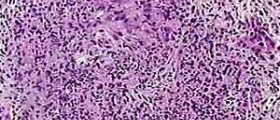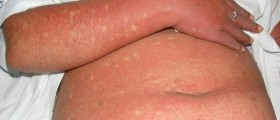
Valley fever also known as Coccidioidomycosis is a fungal infection caused by a specific organism called Coccidioides immitis. It can be also caused by Coccidioides posadasii. Fever is only one symptom of the infection (hence the name) and patients also complain about several more symptoms and signs such as cough and chest pain. The infective agents responsible for the infection are normally found in the soil of certain areas. Manipulation with the infected soils (farming, construction etc.) causes spread of these infective agents and this way they can be easily inhaled.
In mild cases patients do not require any treatment while patients suffering from severe form of the disease are basically prescribed antifungal medications. It is essential to treat the infection during the acute phase. If not treated on time the infection can progresses to chronic form of coccidioidomycosis or disseminated coccidioidomycosis.
Acute Valley Fever and Its Symptoms
Acute form of the disease is usually mild. In some cases it can even be asymptomatic. Still, if the symptoms and signs do occur they range in severity and generally include fever accompanied by chills, cough, chest pain, headaches, night sweats and fatigue. Patients can additionally complain about shortness of breath, joint aches and their skin may be covered with red, spotty rash. The rash in patients suffering from valley fever is in a form of painful, red bumps. These bumps may change their color into brown. The rash predominantly occurs on lower legs and it may also affect the chest, arms and back. Only in certain number of patients the rash may feature with raised red blisters or eruptions that resemble pimples.
Chronic Valley Fever and Its Symptoms
In case acute form of the disease is neglected and not treated properly it eventually progresses into chronic valley fever. Progression of the disease and the onset of chronic valley fever are more common for people who are already suffering from certain conditions such as diabetes and those with weak immune system.
Symptoms of chronic valley fever are similar to symptoms of tuberculosis and they include low-grade fever, weight loss, chest pain and cough accompanied by blood-tinged sputum. There are also nodules in the lungs.
Disseminated Valley Fever and Its Symptoms
This is the most serious form of the infection and develops as a consequence of dissemination of the infective agent from the lungs to other parts of the body. The symptoms and signs of disseminated form of the disease basically depend on the affected organ. The infection can spread to the skin, bones, liver, heart, brain and meninges.
If the skin is affected there are nodules, ulcers and similar skin lesions which occur together with rash. Bone lesions are usually painful and definitely the most serious form of the disease occurs when the infection spreads to the meninges.

















Your thoughts on this
Loading...